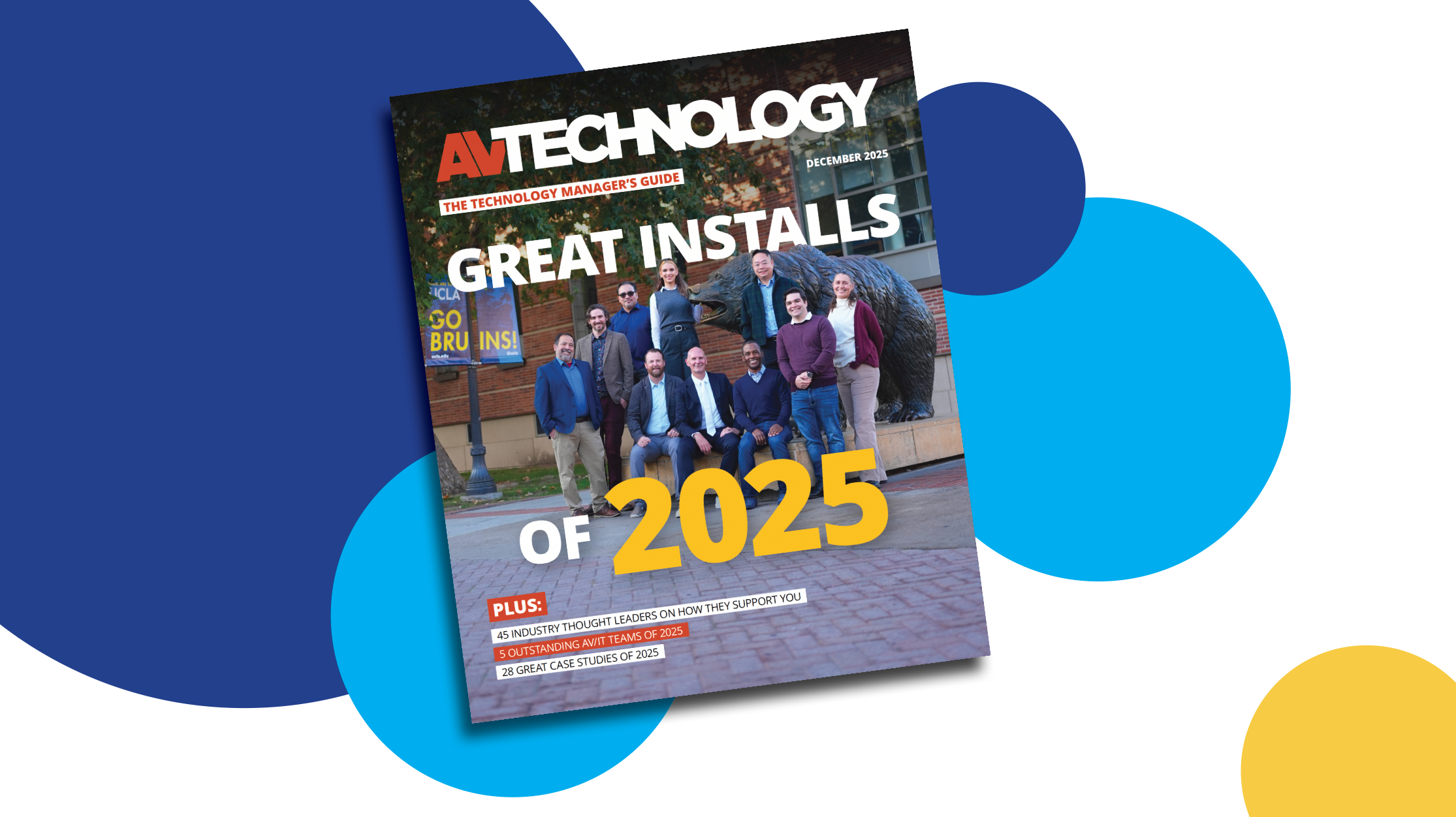On Higher Ed Tech: Atlona
Steve Bogart, Business Development Manager, EDU at Atlona shares insight into designing the higher ed classroom for today and the future. Part of AV Technology's Thought Leader Series.

AVT Question: Please share insight and best practices for designing the higher ed classroom for today and the future.
Thought Leader: Steve Bogart, Business Development Manager, EDU at Atlona
Lecture capture systems and other technologies have long existed for off-campus learning, but the hybrid model largely embraced today was non-existent pre-pandemic, when students were all but required to be in class. Educators now accept that the student community is somewhat split: Some prefer to learn in class, while others prefer to learn from home.
Campus AV and IT leaders recognize this shift and have adopted more flexible technology models to compensate. That adoption certainly includes UC platforms, including conferencing software systems, that bring physical and remote learners together. However, equipping the classroom itself is vital to the success of the hybrid model, not to mention collaborating with students in adjacent spaces on campus. Networked AV adoption presents universities and colleges with infinite possibilities across both scenarios.
Moving to networked AV doesn’t need to be an all-at-once proposition." —Steve Bogart, Business Development Manager, EDU at Atlona
HDBaseT remains a force inside the classroom, offering simple, dedicated connections between source and destination. And though a typical classroom will still feature a fixed number of collaborative stations in each room, we increasingly see collaboration happening across different spaces on campus. That means rerouting cable and reconfiguring patch panels to connect adjacent and distant rooms on the same local area network, among other labor-intensive integration work. AV over IP provides the flexible platform need for in-room students to collaborate across many locations. Networked AV is all about the switch, using IT infrastructure to move low-latency video and audio over local area networks.
Moving to networked AV doesn’t need to be an all-at-once proposition. The industry continues to make progress in how HDBaseT, AV-over-IP, and wireless technologies come together for universal connectivity inside the classroom. That means simplifying how lecturers and students connect to wireless presentation switchers, USB peripherals, and even Bluetooth technologies for audio. Companies like Atlona are removing the technology barriers inside classrooms that hinder learning and automating systems and functions through sensors and control platforms. These steps will accelerate the speed of transitioning the matrix to the network.
A daily selection of features, industry news, and analysis for tech managers. Sign up below.

Cindy Davis is the brand and content director of AV Technology (AVT). She was a critical member of the AVT editorial team when the title won the “Best Media Brand” laurel in the 2018 SIIA Jesse H. Neal Awards. Davis moderates several monthly AV/IT roundtables and enjoys facilitating and engaging in deeper conversations about the complex topics shaping the ever-evolving AV/IT industry. She explores the ethos of collaboration, hybrid workplaces, experiential spaces, and artificial intelligence to share with readers. Previously, she developed the TechDecisions brand of content sites for EH Publishing, named one of the “10 Great Business Media Websites” by B2B Media Business magazine. For more than 25 years, Davis has developed and delivered multiplatform content for AV/IT B2B and consumer electronics B2C publications, associations, and companies. A lifelong New Englander, Davis makes time for coastal hikes with her husband, Gary, and their Vizsla rescue, Dixie, sailing on one of Gloucester’s great schooners and sampling local IPAs. Connect with her on LinkedIn.
